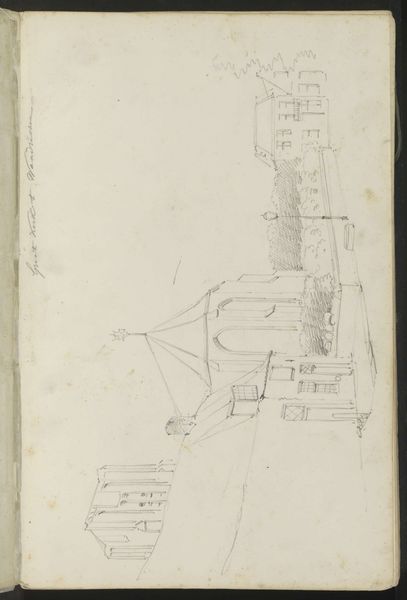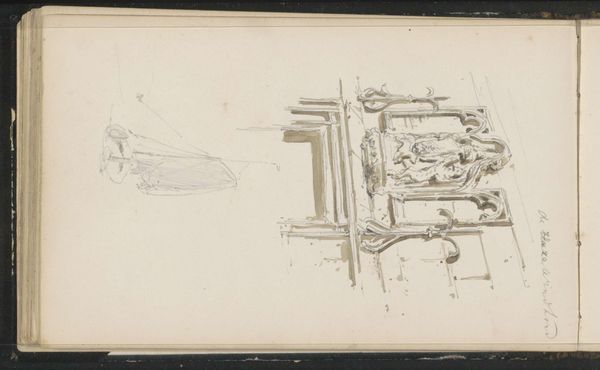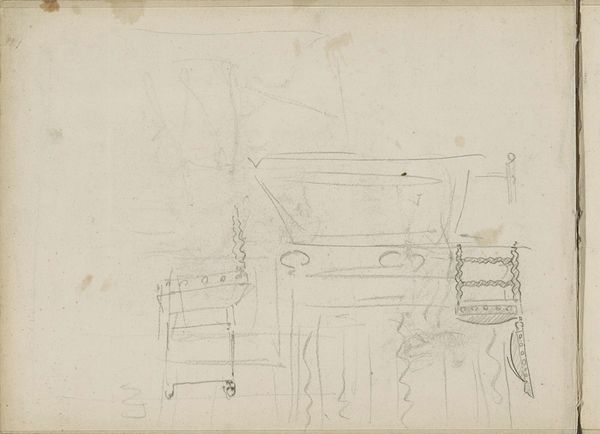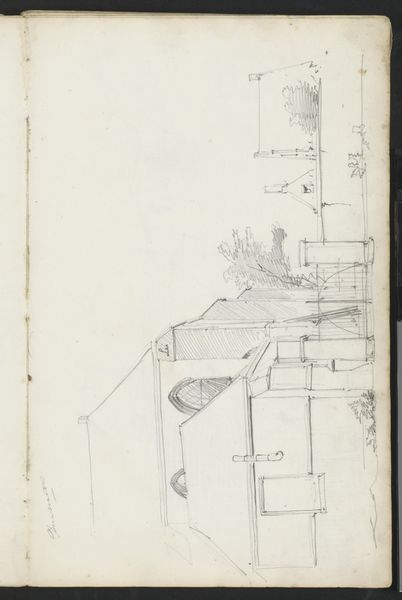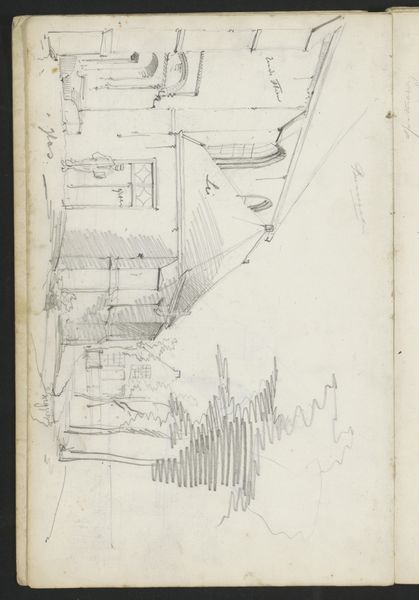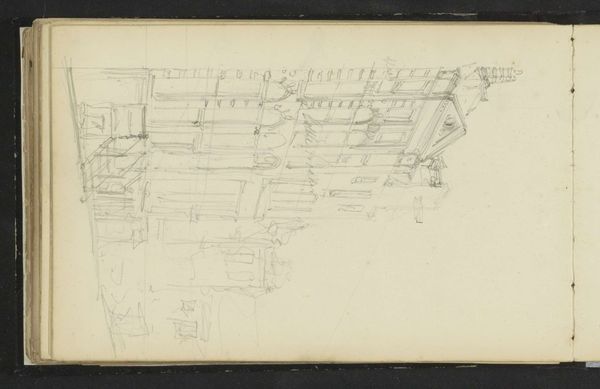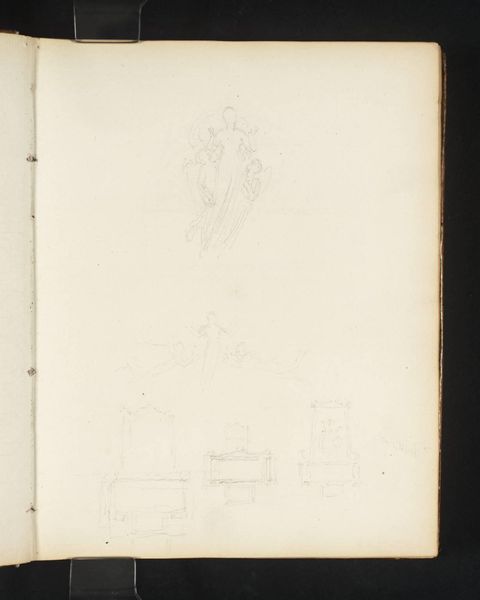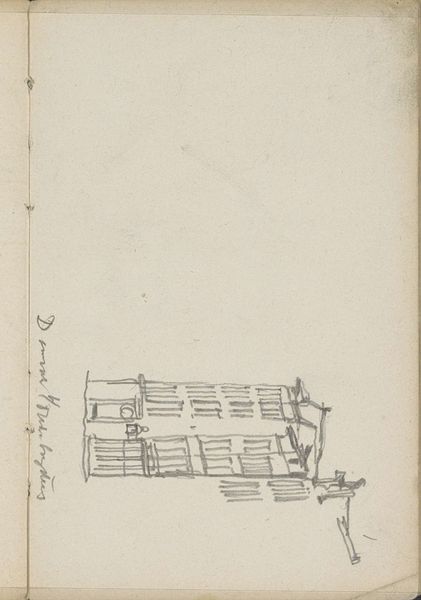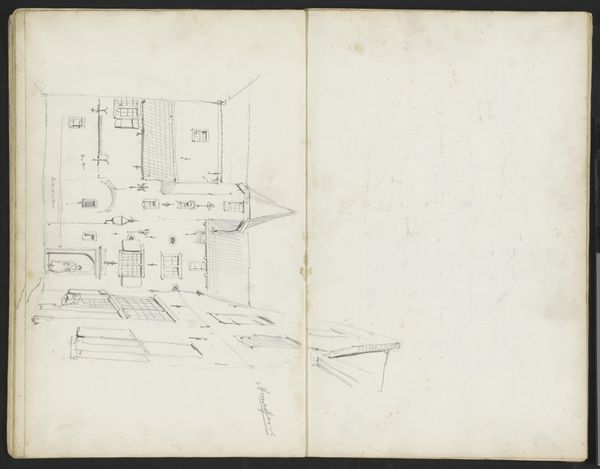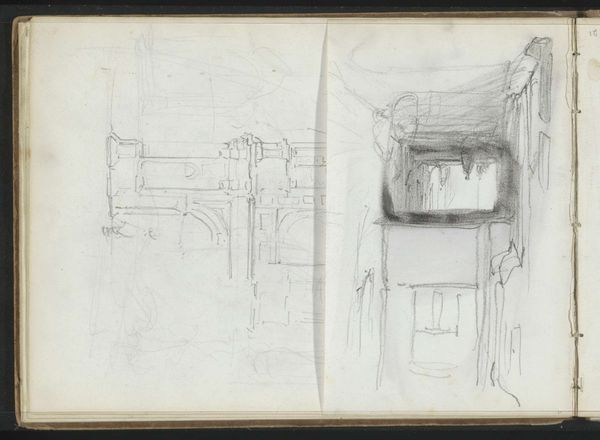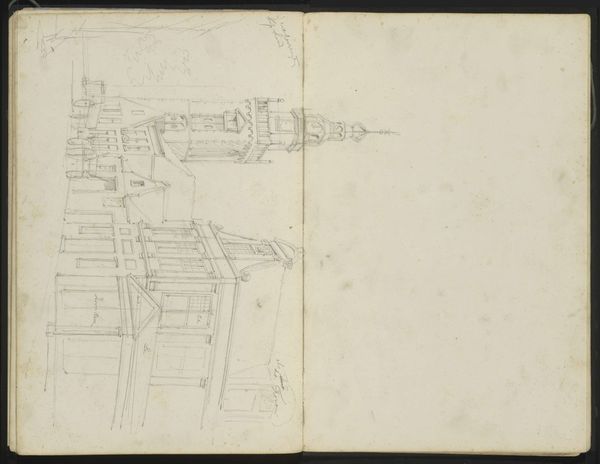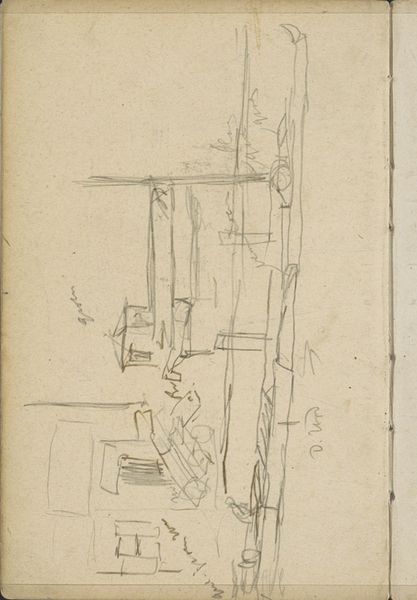
drawing, graphite
#
drawing
#
landscape
#
graphite
#
cityscape
#
academic-art
#
realism
Copyright: Rijks Museum: Open Domain
Curator: This sketch presents the main building of Artis Zoo in Amsterdam, a graphite drawing created by Cornelis Springer between 1846 and 1882. What’s your initial response? Editor: Sparse. But that's also the first impression it makes, with these faint, quick lines creating a world still coming into focus. There's something dreamlike about its unfinished state. Curator: The lightness certainly gives it an ethereal quality. Springer’s choice to work in graphite allows for a focus on architectural structure. Note how the perspective and linear precision, despite the overall lightness, lend a sense of established order and permanence to this young institution. Editor: Yes, while maintaining an atmosphere of accessibility. The Artis was founded to represent the Dutch empire’s collection of nature to the citizens of Amsterdam. It was vital for people to feel invited, and this drawing’s understated precision might mirror that democratic purpose. Curator: It does balance those notions well, suggesting the formal structures while inviting casual observation. One can read it as an interplay between accessibility and architectural definition, reflecting broader social shifts during the period it was drawn. Editor: I agree. I find myself imagining the social activity of its opening days, families milling about—though perhaps that says more about my modern experience of zoos. Did it garner particular praise from architectural circles at the time? Curator: Given Springer’s academic training, one could safely assume he imbued classical architectural standards, although this drawing emphasizes structure rather than ornament. I would also add that its creation possibly corresponds with shifts in understanding public educational spaces during the time, too. Editor: So it's really a sketch caught between worlds – artistic approaches as much as broader shifts in political structures of looking? Curator: Precisely. What the work lacks in finish it provides in insight, making it very thought provoking. Editor: For sure, seeing how structures gain power or acceptance always remains fascinating to consider when reflecting on pieces like these.
Comments
No comments
Be the first to comment and join the conversation on the ultimate creative platform.
